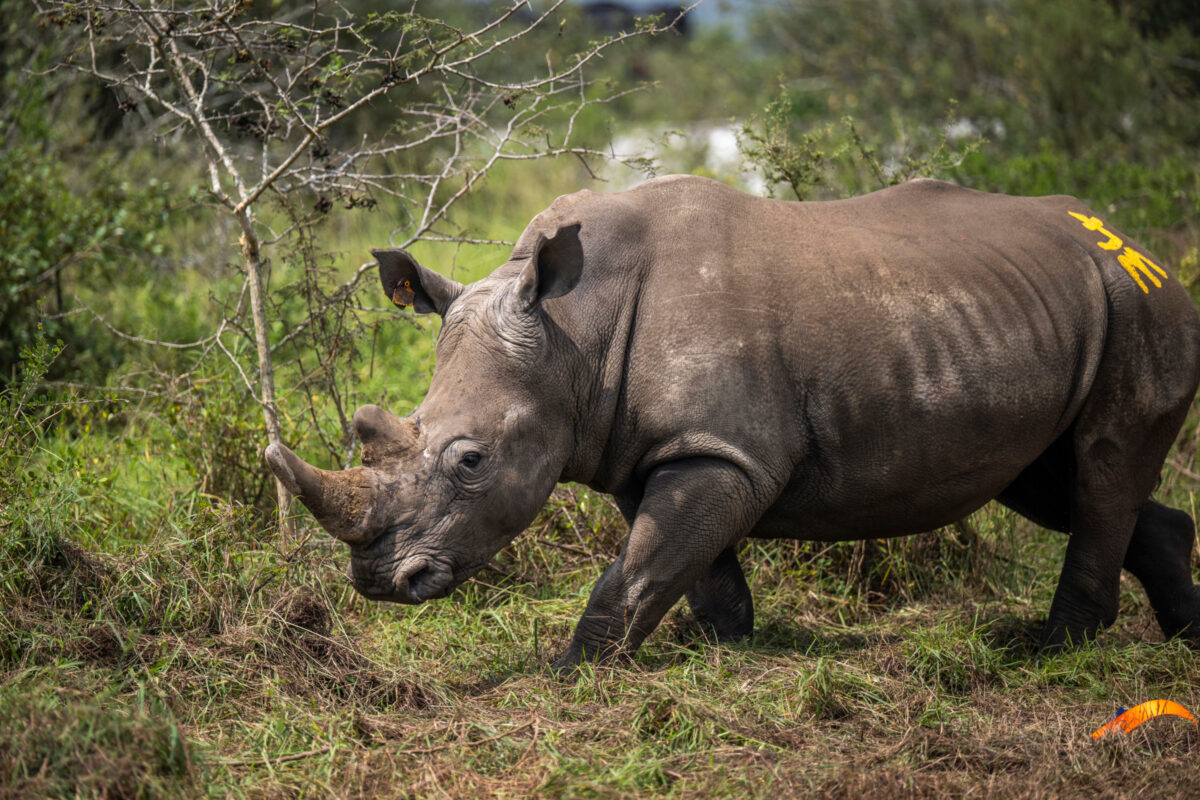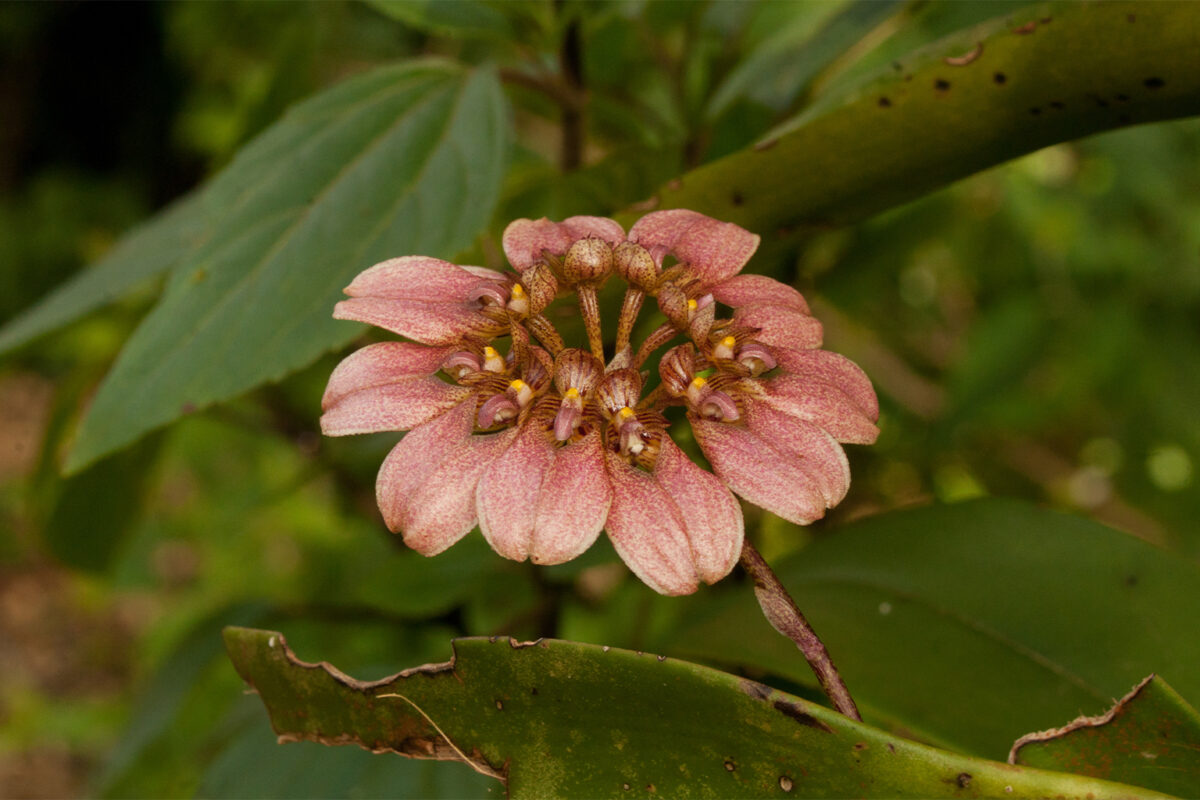- Clown anemonefish (Amphiprion percula) have a surprising survival strategy: they shrink in length — not just lose weight — to survive marine heat waves and avoid social conflicts, boosting their heat wave survival odds by up to 78%, a new study finds.
- Researchers tracked 67 breeding pairs of clownfish in Papua New Guinea through a severe marine heat wave, measuring fish size repeatedly and finding that synchronized shrinking between mates helps maintain social hierarchies and improves survival chances.
- The study raises bigger questions about whether this shrink-to-survive mechanism is widespread among fish, potentially explaining global trends of shrinking fish sizes amid climate change, and calls for controlled lab experiments to uncover the physiological causes.
Clownfish are known for their remarkable ability to change sex to survive. Turns out, one species, clown anemonefish (Amphiprion percula), popularized in the Pixar hit movie Finding Nemo, have yet another surprising survival trick up their fins: they can also shrink themselves to weather heat waves and dodge social squabbles. When things get hot and tense on the reef, these little fish size down to stay alive and keep the peace, a new study finds.
Published this May in Science Advances, the study reveals a fascinating finding: these clownfish can actually get shorter — not just skinnier — to survive extreme heat. And this shrinking strategy boosts their odds of making it through a heat wave by up to 78%.
Melissa Versteeg, the study’s lead author and a doctoral researcher at Newcastle University in the U.K., said the shrinking in length was the most surprising finding. “That wasn’t anything we’d witnessed before,” she told Mongabay by email. She said she was also struck by how shrinking helped the fish survive heat stress. And then they “also bounce back when they can.”
To dive into this curious survival strategy, the research team, working with the Mahonia Na Dari Conservation and Research Centre in Kimbe Bay, Papua New Guinea, observed 67 breeding pairs of wild clown anemonefish from February to August 2023. This study period overlapped with the world’s fourth global coral bleaching event, during which local water temperatures surged as much as 4° Celsius (7.2° Fahrenheit) above the long-term average.
The researchers monitored breeding pairs every four to six days to track survival and anemone-scale heat stress, while measuring each fish’s total length at the start and end of every lunar month. To their surprise, 100 out of 134 fish shrank during the study, so much so that they re-measured each fish multiple times over five months to confirm it. In the end, Versteeg said, shrinking proved to be very common in this population.
”Shrinking to survive seemed at odds with what we know, as being of larger size is typically favourable to e.g. reproductive success,” Versteeg added.
Scientists aren’t exactly sure how clownfish shrink. Nor are they certain what advantage they gain from doing so, but the researchers suggest it could help the fish reduce their metabolic demands when heat ramps up and oxygen becomes scarce. Smaller bodies may also be easier to maintain when food is limited or harder to find during a heat wave.

Shrinking, staying together
Clown anemonefish live in tight-knit reef groups across the Indo-Pacific, where marine heat waves are getting hotter and more frequent. They live symbiotically with anemone (Radianthus magnifica), with a single anemone hosting a group that maintains a strict size-based hierarchy: a dominant breeding pair — a larger female (rank 1) and slightly smaller male (rank 2) — followed by three to six nonbreeding subordinates. Dominants grow to match the anemone’s size and its available resources, while subordinates stay small to avoid eviction — a death sentence in the wild. This study zoomed in on these dominant pairs, whose clear size ranks make them perfect for tracking survival tactics.
Even more intriguing? The fish that shrink together, survive together. The study found clownfish had a better shot at making it through a heat wave if they shrank in sync with their breeding partner. It’s the first time scientists have seen a reef fish respond to both environmental and social pressures by actually changing its size.
“Finding this ability for shrinking improved the survival of the clown anemonefish was super surprising,” Versteeg said, because “clown anemonefish live in strict social formations where size is also key — getting smaller is risky because competition over social positions in the group can lead to eviction from the anemone.”
Once they saw that shrinking happened within breeding pairs, it started to make more sense, Versteeg said. “We saw that subdominant males would shrink a little more compared to the dominant females, presumably to uphold the size hierarchy and avoid conflict.” Meanwhile, females only shrank if their size compared to their male partner allowed it safely, meaning they still had to be big enough to avoid conflict, she added.
Fabio Cortesi, a clownfish expert at the University of Queensland in Australia, who wasn’t involved in the research, praised the study’s rigor and fieldwork intensity, calling it “an enormous amount of work” amid “an extreme marine heating event.”
“Versteeg and colleagues did an excellent job,” he told Mongabay by email
Cortesi said the study’s unique setup — monitoring site-attached breeding pairs every few days — made for an ideal natural experiment. Similar shrinkage has been observed in a few other vertebrates, like Galápagos marine iguanas during El Niño and tree shrews in winter, but “to see something similar occurring in the clownfish is fascinating and not something one would expect,” he added.

Bigger questions raised
Meanwhile, the team also noticed that after shrinking, the fish often bounced back with what’s called “catch-up growth” once temperatures cooled, showing that this size change is flexible and reversible.
Versteeg said she wasn’t surprised that heat waves hit clown anemonefish hard. “They’re stuck on their anemone with nowhere else to go when things get too hot… It’s a stark reminder of the cost of ongoing ocean warming,” she said.
Still, watching how these fish adapt was both humbling and inspiring, she said. “It’s great to have witnessed how brilliant clown anemonefish are when it comes to survival.”
The findings also spark a bigger question: Could shrinking explain why many fish species worldwide are getting smaller? Possibly, said co-author Theresa Rueger, a senior lecturer at Newcastle University, but she stressed that more research is needed to be sure.
“If individual shrinking were widespread and happening among different species of fish, it could provide a plausible alternative hypothesis for why the size of many fish species is declining,” Rueger said in a news release. “Further studies are needed in this area.”
Cortesi likewise said he believes the study opens up a host of other intriguing questions about how clownfish manage to shrink. “Do their bones get shorter or more compressed? Is it metabolic stress from excess heat or a result of food restriction?” he asked.
He also questioned just how common this shrink-to-survive strategy is in the marine world. “Do other fish also shrink and grow in response to temperature shifts — especially smaller, site-attached species?” he said. “Could this be a mechanism to deal with the rapid acceleration of climate change, where extreme fluctuations in temperature are becoming more and more common?”
Answering these questions, Cortesi said, will require “an enquiring scientific mind and carefully, well-balanced and controlled experiments.” He recommended bringing the system back into the lab — inducing shrinkage under controlled temperature, social and feeding conditions, paired with physiological and molecular tests — to better understand what drives the change.
Meanwhile, Versteeg said she hopes the study leaves readers not just amazed by the fish’s resilience and the “ingenuity of nature against a backdrop of major climate crisis,” but inspired to take action.
“If anemonefish can coordinate and adapt, surely we can too,” she said. “I hope that the paper reminds us that there is so much yet to discover. I believe that we can collaborate to protect our ocean environments.”
Banner image: Clown anemonefish live symbiotically with anemone, with a single anemone hosting a group that maintains a strict size-based hierarchy. Image by Morgan Bennett-Smith.
A Honduran reef stumps conservationists with its unlikely resilience
Citation:
Versteeg, M. A., MacDonald, C., Bennett-Smith, M. F., Buston, P. M., & Rueger, T. (2025). Individual clown anemonefish shrink to survive heat stress and social conflict. Science Advances, 11(21). doi:10.1126/sciadv.adt7079
FEEDBACK: Use this form to send a message to the author of this post. If you want to post a public comment, you can do that at the bottom of the page.



